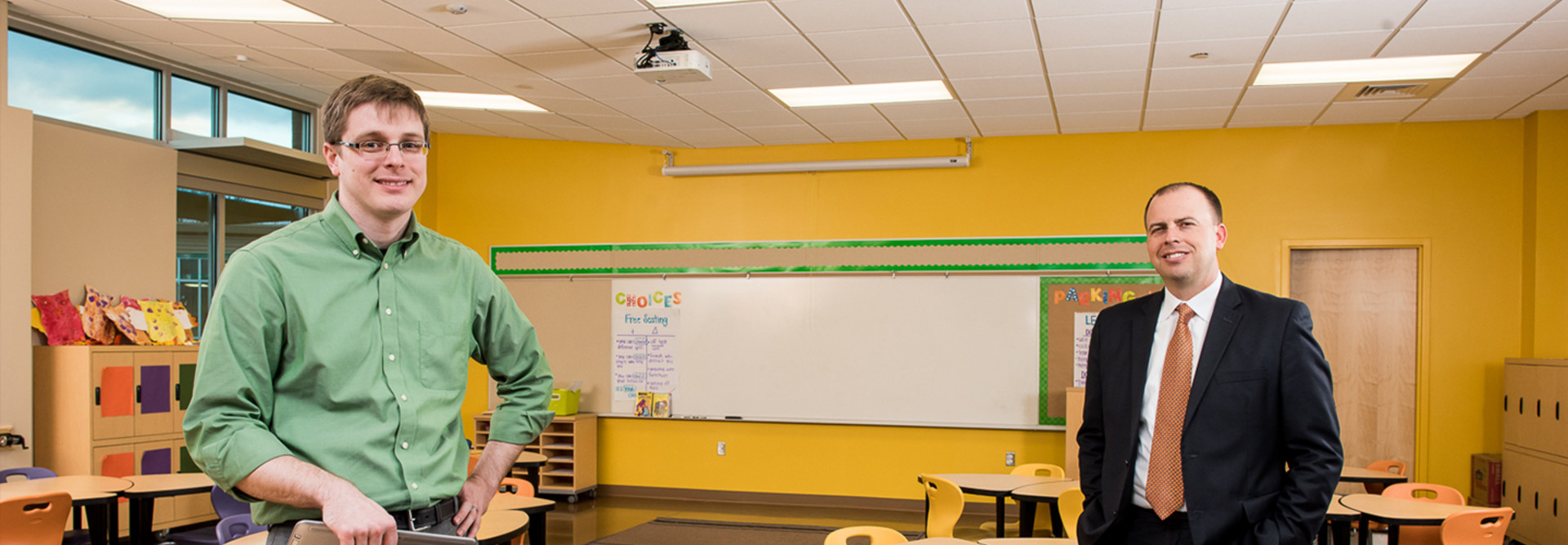Classroom Technology Gets Everyone Out from Behind the Desk
People depend on their smartphones, tablets and notebooks for work and play. The administration at Springfield Public Schools in Missouri wants the district to reflect society’s modern, mobile reality.
“We know that life is very mobile today, so it’s really important for the staff to be mobile and to give our students the right tools so they can succeed in college and in life,” Superintendent John Jungmann says.
Jungmann wasn’t content to have the district’s teachers confined to a small area around their desks where the projectors usually sit.
Bruce Douglas, director of IT, says the district attached Actiontec ScreenBeam Wireless Display devices to the projectors so teachers can roam freely and control the projectors through a wireless network.
Springfield teachers have HP Elite x2 1011 two-in-one devices that they can detach and use as tablets. Each unit comes with a digital pen and camera, so teachers can take pictures of students’ work, for example, project it onto a screen in the front of the room and annotate it.
“This was all about creating a mobile workforce,” Jungmann says. “We want the teachers to have the devices wherever they go, both inside and outside the classroom.”
Douglas says the move to deploy wireless display devices was part of a districtwide initiative called IGNiTE (Inspire, Grow, Network, Integrate, Transform, Engage) that aims to provide the resources and support necessary to create a personalized learning environment for district students.
As of mid-November, 18 of Springfield’s 52 schools were participating in IGNiTE. K–2 classrooms will receive eight mini tablets, and each elementary school will have a cart of 30 Chromebooks. Students in grades three through 12 will receive an HP Chromebook 11, which they may take home with them throughout the year.
Douglas says the district chose Chromebooks mainly because students like the touchpad and keyboard. The Chromebooks also integrate well with Google Apps for Education, he says.
Teacher Training
The percentage of respondents who listed personalized learning as a primary reason for using blended learning
SOURCE: Clayton Christensen Institute for Disruptive Innovation, The Learning Accelerator and the Ohio Blended Learning Network, “State of Opportunity: The Status and Direction of Blending Learning in Ohio,” October 2015
In spring 2015, Springfield Public Schools teachers also attended Buck Institute for Education sessions on project-based learning, where they learned how to use technology tools to personalize education by grouping students who then collaborate on assignments.
“We’re aiming to engage students around their interests, teach them subject matter that has an educational purpose and give them the freedom to learn at their own pace,” says Jungmann.
Kari Arfstrom, founding executive director of the Flipped Learning Network, says teachers across the country use technology today to team up students with similar interests or abilities, thereby personalizing their learning.
“Teachers can use technology to quickly figure out how to put students into groups,” Arfstrom says. “They can assign a video as homework and embed a questionnaire that they can view in the morning to see if the students comprehended the material. Based on the results, they can assign groups.”
Nathan Myers, director of educational technology at Mesa Public Schools in Arizona, calls this “teaching untethered.” The district’s 4,000 teachers use Lenovo ThinkPad Helix two-in-one units that, when combined with Actiontec Wireless Display units, allow them to roam the classroom.
“We want the teachers to teach and project from anywhere in the room,” Myers says. “We also want them to have the devices and access to coursework and information wherever they are, be it in class, at a staff meeting or within their professional learning communities.”
Myers says teachers can now walk around the room, snap a picture and annotate it on the screen in front of the classroom. He says the district’s trainers are also out and about, working with teachers on how to use technology to do more collaborative learning. There are also different teams of teachers working with one another at the high school and middle school sharing ideas on what actually works. Mesa Public Schools CIO David Sanders says the technology will create an environment in which project-based, collaborative learning can flourish. “Our teachers are experimenting with all these trends in education,” Sanders says.
Wireless Pockets
Rodney Mack, executive director of technology at Community Unit School District 200 in Wheaton, Ill., says the district has taken several paths to deploying wireless displays.
The schools have networked projectors in some rooms so teachers can roam and connect via wireless APs in the classroom. They also have about 50 LG TVs with Chrome displays that teachers can access wirelessly with their Chromebooks.
Since the district upgraded its back-end infrastructure two years ago, Mack says they have increased the number of devices they support by about 2,000. To manage the increase, the district upgraded its wireless APs to 802.11ac in the high schools and will upgrade the middle schools next year.
The district also has formed a Future of Instruction and Technology (FIT), committee, which considers ways to improve instruction and provide an environment for anytime, anywhere learning.
“Now that we have all this technology, we have to figure out what to do with it,” Mack says. “Moving forward, all the school improvement programs have to have a FIT component.”
These districts are well on their way to integrating technology with the latest teaching techniques.
They are enthusiastic about the future of teaching and learning.









